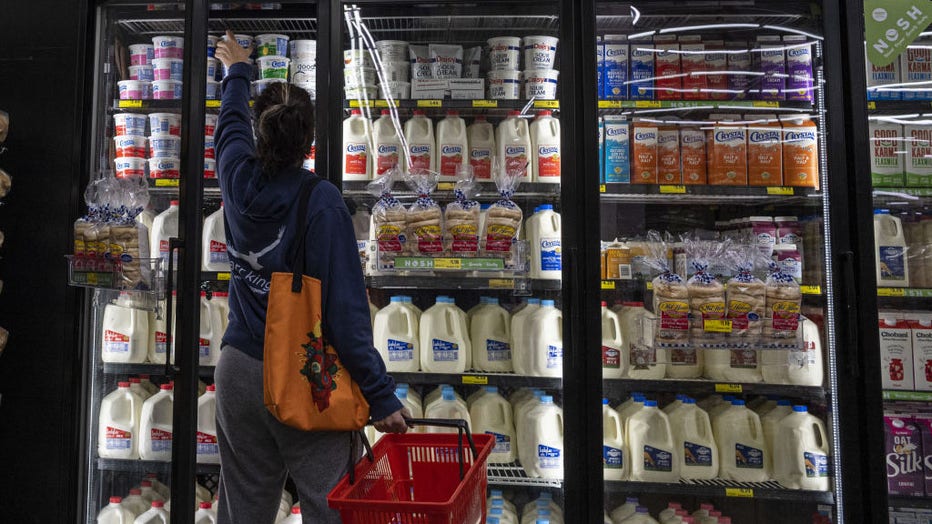Families paying 25% more for groceries since pre-pandemic times: report

Grocery store prices still outpacing overall inflation
FOX 5's Josh Rosenthal spoke to shoppers in Silver Spring after a new report from D.C. think tank Groundwork Collaborative helps explain why many grocery prices remain so high.
SILVER SPRING, Md. - Ask shoppers about the price of groceries these days, and there’s a good chance they won’t hold back.
"Terrible," Tia Harper said Wednesday outside of a Giant Food store in Silver Spring. She then held up her receipt, reading $155.50.
"Sometimes I just stand to the side and look at my receipt and say, ‘Well did they ring this up wrong?’ And by the time I actually add it up, it’s right," added another shopper, Karen Combs.
A new report from D.C. think tank Groundwork Collaborative helps explain why many grocery prices remain so high.
Researchers found that families are paying 25 percent more for groceries now than they were before the pandemic, outpacing overall inflation.
They also found that five categories of groceries deserve a lot of the blame, noting that beef and veal, poultry, fresh produce, non-carbonated juices and drinks, and snacks drove nearly 30 percent of grocery inflation.
The report’s authors also said corporate consolidation and profiteering have had a major impact on the grocery bills of families too.

FILE IMAGE - A shopper reaches for cottage cheese inside a grocery store in San Francisco, California, on May 2, 2022. Photographer: David Paul Morris/Bloomberg via Getty Images
"The inputs to making this food for producers has gone down pretty significantly and yet those companies are not passing those savings off to consumers," explained Groundwork Collaborative Strategic Advisor Elizabeth Pancotti. "They’re not hiking sticker prices by very much, but they’re keeping them high even as their costs come down."
Pancotti gave Mondelez International as an example. Among other products, the company makes Oreos, Wheat Thins, and Ritz crackers.
"They have seen their profit margins increase by about 75 percent over the past year as their prices come down, but sticker prices for consumers stay up," Pancotti said
Mondelez International didn’t immediately respond to a request for comment.
To read the full Groundwork Collaborative report, you can click here.



